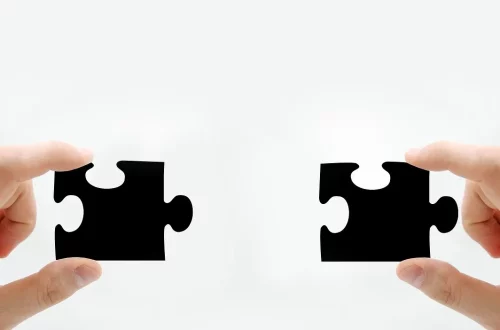
The Importance of Open Communication: How to Tellyourpartner Effectively
Open communication is the cornerstone of any successful relationship. It fosters trust, understanding, and intimacy, allowing partners to connect on a deeper level. When individuals feel comfortable expressing their thoughts and emotions, they create a safe space for vulnerability and honesty. This open exchange of ideas not only enhances the emotional bond but also helps in navigating the complexities of a relationship.
In a world filled with distractions and busy schedules, prioritizing effective communication can be challenging. However, the benefits far outweigh the effort required. When partners engage in meaningful dialogue, they can address misunderstandings, resolve conflicts, and share their aspirations and concerns. This proactive approach to communication can prevent resentment from building up and can create a more harmonious living environment.
Moreover, open communication is not just about discussing issues; it is also about celebrating successes, expressing affection, and sharing dreams. It encourages a culture of appreciation, where both partners feel valued and heard. Ultimately, mastering the art of communication can transform a relationship from mere coexistence to a fulfilling partnership rooted in mutual respect and understanding.
Understanding the Foundations of Effective Communication
Effective communication is built on several key principles that foster connection and clarity between partners. The first step is active listening. This involves truly hearing what your partner is saying without planning your response while they speak. Active listening requires full attention, which demonstrates respect and validation of your partner’s feelings. It involves not only listening to the words but also paying attention to non-verbal cues, such as body language and tone of voice.
Another foundational element is empathy. Being able to put yourself in your partner’s shoes allows for a deeper understanding of their perspective. When you communicate with empathy, you acknowledge their feelings and experiences, which can help de-escalate potential conflicts. Expressing empathy can be as simple as saying, “I understand that you’re feeling upset about this,” which opens the door for further discussion without defensiveness.
Clarifying and summarizing what your partner has said can also enhance communication. This technique shows that you are engaged and helps avoid misunderstandings. Phrases like, “What I hear you saying is…” can help ensure that both partners are on the same page. It’s essential to approach these conversations with an open mind and a willingness to adapt your views based on new information.
Additionally, non-verbal communication plays a crucial role in how messages are conveyed and received. Facial expressions, gestures, and posture can significantly influence the effectiveness of your communication. Being aware of your own non-verbal signals and interpreting your partner’s can enhance understanding and connection.
Finally, it is vital to create a safe environment for communication. This means establishing ground rules that promote respect and discourage interruptions or dismissive behaviors. When both partners feel safe to express their thoughts and emotions, they are more likely to engage in open and honest dialogue.
Overcoming Barriers to Open Communication
Despite the importance of effective communication, many couples encounter barriers that hinder open dialogue. One common obstacle is fear—fear of rejection, fear of conflict, or fear of being misunderstood. These fears can lead to avoidance or passive-aggressive behaviors, which can further complicate the relationship.
To overcome these barriers, it is essential to address the underlying fears directly. This may involve having a candid discussion about what each partner fears in communication. By acknowledging these fears, couples can work together to create strategies that minimize anxiety and promote openness. For example, setting aside specific times for discussions can help partners prepare mentally and emotionally.
Another barrier is the influence of past experiences. If a partner has experienced negative communication in previous relationships, they may carry those feelings into their current partnership. It is crucial to differentiate between past and present experiences. Encouraging each other to express feelings about past traumas can help in breaking down these barriers. Couples can seek professional guidance if needed, as therapy can provide valuable tools for healing and improving communication.
Additionally, the use of technology can sometimes hinder face-to-face communication. Text messages and social media can lead to misunderstandings due to the lack of tone and context. Setting boundaries around technology use during conversations can help ensure that both partners are fully present and engaged.
Time constraints can also pose a significant barrier. In our fast-paced lives, it may be challenging to find quality time for meaningful conversations. Couples should prioritize regular check-ins where they can discuss their thoughts and feelings without distractions. This commitment to setting aside time for open dialogue reinforces the importance of communication in the relationship.
Practicing Open Communication in Everyday Life
Integrating open communication into daily life requires intentional effort and practice. One effective method is to establish a routine of daily or weekly check-ins, where both partners can discuss their feelings, share updates, and address any concerns. These check-ins can be brief but should allow for open dialogue and emotional sharing.
Another practical approach is to practice assertive communication. This involves expressing your thoughts and feelings openly and honestly while also being respectful of your partner’s feelings. Using “I” statements can help in communicating your perspective without sounding accusatory. For example, saying, “I feel overwhelmed when there are too many tasks to handle at once,” is more constructive than saying, “You never help me.”
Additionally, expressing appreciation and gratitude can significantly enhance communication. Acknowledging the positive aspects of your partner and the relationship fosters a supportive environment. Simple compliments or expressions of gratitude can strengthen the emotional connection and encourage both partners to share more openly.
Engaging in activities together can also promote open communication. Whether it’s cooking, exercising, or pursuing a shared hobby, these experiences provide natural opportunities for dialogue. During these relaxed moments, partners may feel more inclined to share their thoughts and feelings, leading to deeper discussions.
Finally, being patient with each other is essential. Open communication is a skill that takes time to develop. Celebrate small victories and be willing to learn from setbacks. Encouraging each other to practice communication skills and providing constructive feedback can help both partners grow in their ability to express themselves effectively.
In conclusion, open communication is vital for building and maintaining a healthy relationship. By understanding the foundations of effective communication, overcoming barriers, and practicing these skills in everyday life, partners can create a deeper connection and a more fulfilling partnership. Remember, effective communication is not just about talking; it is about creating a space where both partners feel heard, valued, and understood.
This article is not intended as medical advice. For any health-related concerns, please consult a qualified medical professional.




